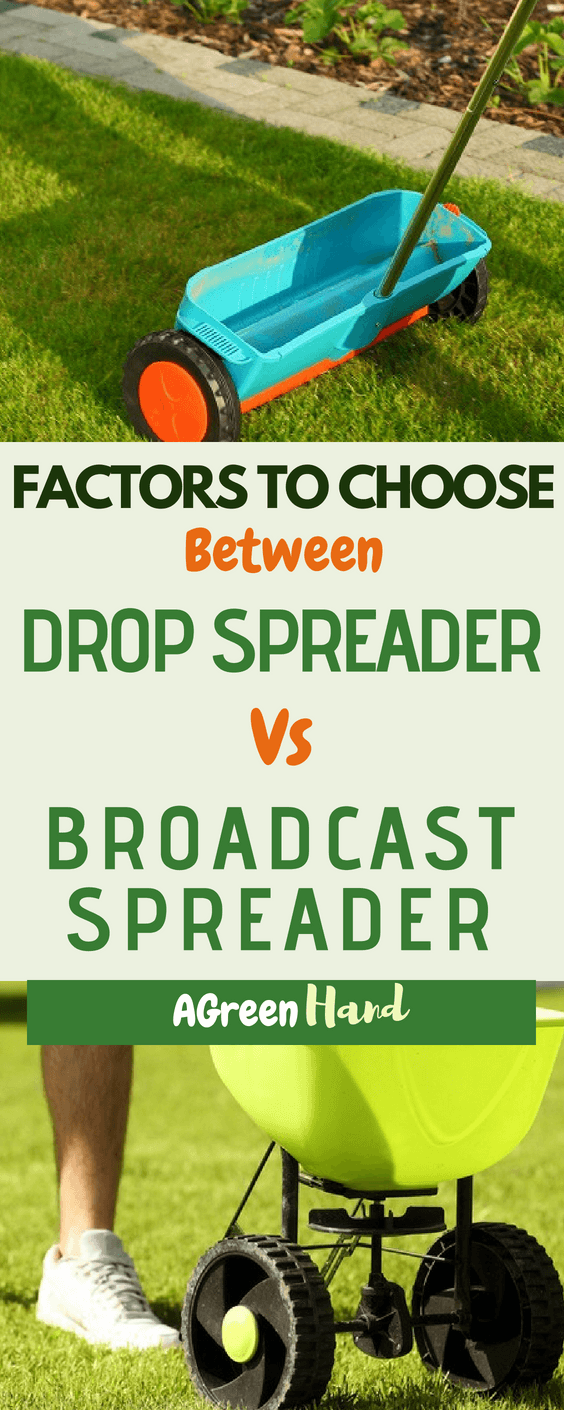Admit it, their names suggest confusion which can get on your nerves easily. Spreaders can vary from small handheld models, to something as complex as a huge machine using the pull of a tractor. For the battle between drop spreader vs broadcast spreader read through this article for more information.
How Much Area Do You Need To Cover?
A drop spreader works by spreading seeds only on areas you pull the device into. It drops seeds or fertilizers in even rows giving you the accuracy and uniform coverage.
Broadcast spreaders on the other hand stay true to their name, they send off seeds in a fan-like direction, which therefore covers more grounds. Since seed is being thrown to a distance, the coverage is not the same for every corner in your garden.
How Much Time Do You Plan On Investing?
Because each lawn spreader is different in terms of how they distribute seeds, time of application also varies. The drop spreader goes on a parallel pattern on the first round. Then it does a second pass of seeding perpendicular to the finished pass. Striping is prevented when grass starts to thicken.
A broadcast spreader, on the other hand, covers more ground in a shorter span of time. However, it compromises precision. If you have taller grass and just want additional thickness, then a broadcast spreader can work. To sum it up, a drop spreader is slower but more careful in creating a pattern, while a broadcast spreader is faster but not as precise.
What Are The Wind Conditions In Your Area?
A broadcast spreader propels seeds or fertilizer, so if you’re living in an area with strong wild winds, don’t opt for this device. You won’t spread the seed all over unwanted place and earn yourself a tedious cleaning task. With the drop spreader, you save a more money with narrower spreading areas.
What Is The Shape Of Your Lawn Area?
A drop spreader works best on a regular polygon-shaped lawn, as seed is given only on areas where the tool can pass or roll on. If you have existing flower beds you do not want to spread seeds on, a drop spreader can easily navigate and stay away from these.
A broadcast spreader on the other hand, can deal with a lot of shapes as seed can be propelled on hard-to-reach areas. However, you cannot easily protect the areas you don't want any seed on.
What Is Your Goal For Using A Spreader?
Spreaders can be used for fertilizing, seeding, or amending the soil, and before purchasing think about what you’ll be using it for. Of course it is beneficial when it is a multi-purpose tool, but it all comes down to your preference. A drop spreader works best with seeding and fertilizing a lawn uniformly, although it does need a little more time and investment to produce lush and precise results.
A broadcast spreader on the other hand also does the job of seeding well for bigger areas that need a little more thickness. Both of these spreaders have the same goal, and so the perfect tool all boils down to the user’s needs in terms of size, time, and shape.
It can be really frustrating trying to find the perfect tool to aid in your lawn caring needs, but with these simple questions you can easily pick out and consider which item you’ll be most efficient with. If you like this article please do not forget to share, and if you think I missed any other details regarding these spreaders then leave a comment down below to start a discussion.


